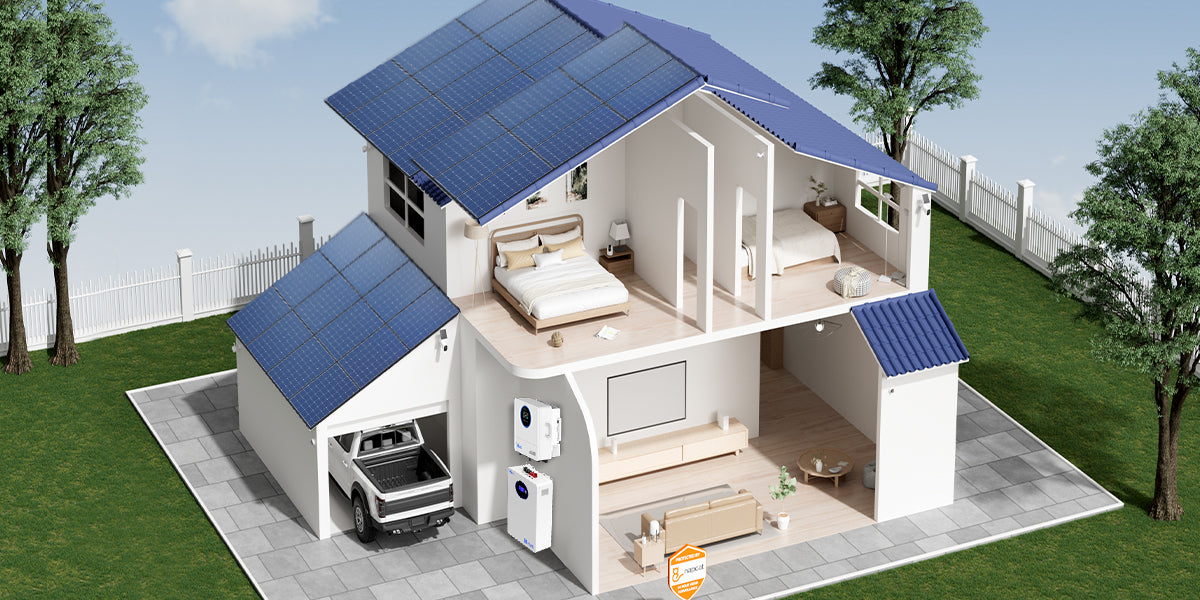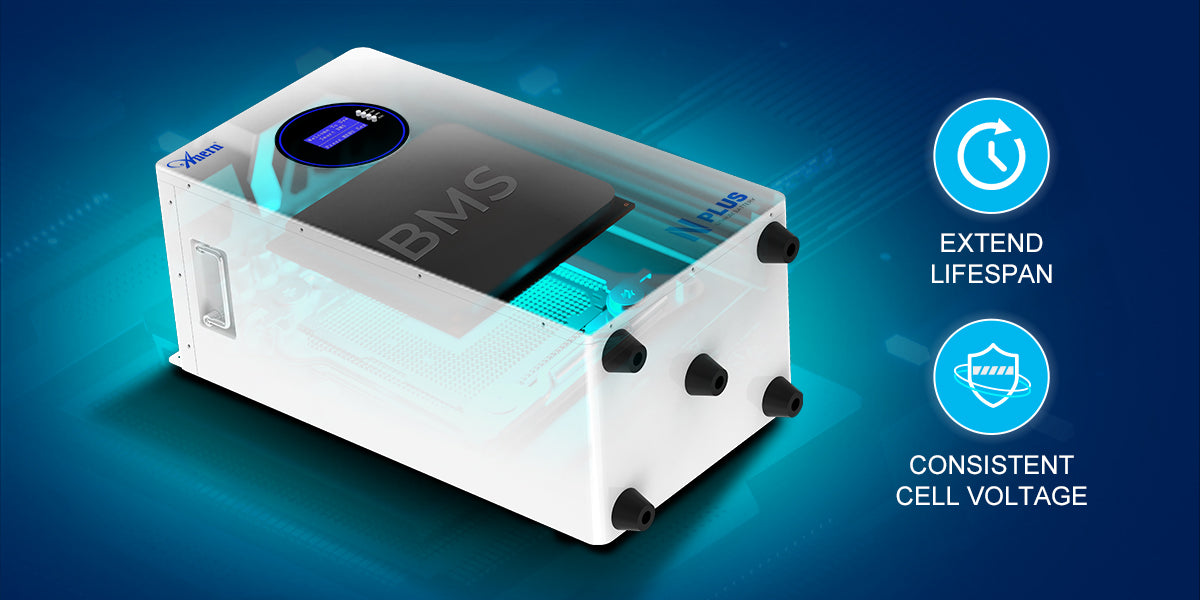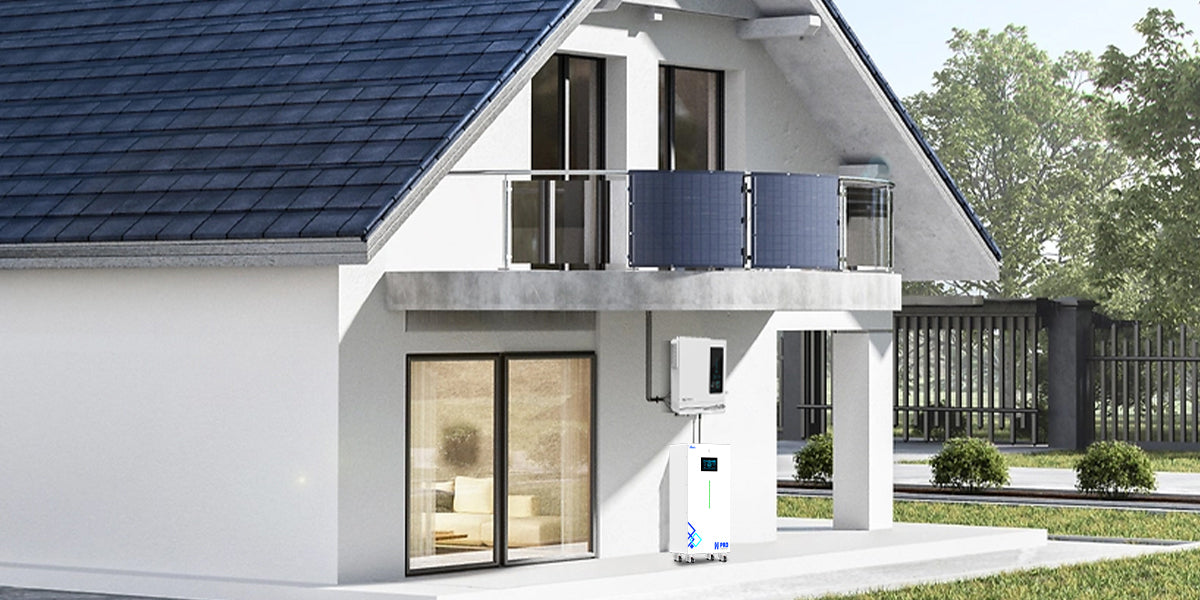Outages hit when work cannot stop. Setups fail from hot cables, tripped fuses, harsh inrush, and charge lockouts at 32°F. This guide gives a clear way to build 24V and 48V LiFePO4 battery systems that start clean and run cool. You will plan, size, wire, protect, and commission with exact set points, simple checks, and tools you already own.
What to Confirm Before You Build A LiFePO4 System
Good results start with a short plan. Map real loads, the backup hours you want, cable paths, and the space you have. Pick a system voltage that matches the power. A 24V layout fits mid power. A 48V layout keeps current lower and helps with long runs. Charge only above 0 °C (32 °F) for cell safety. Select a BMS with cell temperature sensing and current limits that fit the plan. Use a charger or solar controller with custom set points. Keep the main DC voltage drop under 3 percent to control heat and noise.
- Record continuous watts, surge watts, and target hours in one sheet
- Reserve space for busbars and a service disconnect for easy service
- Note airflow or light insulation for winter sites
Essential Protection For LiFePO4 System Design
Protection places hard limits where they matter. Put the primary overcurrent device near the positive post. A high-interrupt fuse or breaker within about 7 inches is a sound habit. Each parallel string needs its own fuse. A DC-rated service disconnect that opens both poles helps during maintenance. Bond all metal cases to the equipment ground and keep joints tight and clean. Set BMS rules for low-temperature charge block and pack temperature alarms. A LiFePO4 battery behaves best when these limits are clear and enforced.
- Primary OCPD near the source, branch OCPD per string or device
- Clear labels for open and closed states on the service switch
- Document ratings and torque values for later checks
Sizing Templates For 24V And 48V LiFePO4 Systems
Purpose: give you a quick template and two worked examples. Swap in your watts and hours to get amp-hours, current, and first set points. This removes guesswork during purchase and layout.
Universal Formulas
- Energy (kWh) = Watts × Hours ÷ 1000
- Capacity (Ah) ≈ Energy (Wh) ÷ 25.6 V for 24V, or ÷ 51.2 V for 48V
- Current (A) ≈ Watts ÷ 24 V for 24V, or ÷ 48 V for 48V
Example A: 24V (8S)
Goal 2 kW for 2 h. Energy 4 kWh. Capacity ≈ 4000 Wh ÷ 25.6 V ≈ 156 Ah; pick 200 Ah for reserve. Full-load current ≈ 2000 W ÷ 24 V ≈ 80–90 A. Choose a cable that holds a drop under 3 percent for the run length. The primary fuse is sized for the continuous current and the fault level of the bank. Set the upper charge window to 28.4–29.2 V and keep charge current within BMS limits. This is a clean baseline for a 24V LiFePO4 system.
Example B: 48V (16S)
Goal 5 kW for 3 h. Energy 15 kWh. Capacity ≈ 15000 Wh ÷ 51.2 V ≈ 293 Ah; choose 300–400 Ah by reserve needs. Full-load current ≈ 5000 W ÷ 48 V ≈ 100–110 A. Fuse each parallel string near its source. Set the upper charge window to 56.8–58.4 V. Confirm insulation and tidy routing. This frames a robust 48V LiFePO4 system.
How To Wire 24V And 48V LiFePO4 Battery Banks
This section gives a short, repeatable four-step method you can follow on site.
Step 1: Prepare And Place Protection
Confirm busbar locations. Mount the main fuse or breaker close to the positive post within about 7 inches. Label polarity and cable routes. Stage equal-length cables and matching lugs.
Step 2: Build Series Strings
Assemble the series string first. Use 8 cells in series for 24V and 16 cells in series for 48V. Verify polarity and record string voltage.
Step 3: Land Strings On The Busbars
Connect each string to the positive and negative busbars with equal length, same-gauge cables. Crimp lugs with the right die, pull-test a sample, torque to spec, and log the values.
Step 4: Precharge And Power Up
Use a resistor to precharge the inverter DC link. After precharge, close the main switch. Power on with no load, watch the current and alarms, then add load in steps. A LiFePO4 battery bank wired this way runs cooler and shares current well.
Commissioning And Balancing A LiFePO4 Battery
Commissioning protects gear and reveals hidden mistakes. Move slowly and record readings. Start with a visual pass for polarity tags, strain relief, and no exposed copper. Record open-circuit voltage for each string and compare values. Precharge through the resistor, then close the main switch. Power the inverter with no load and watch current and alarms. For the first balance, charge near 3.55–3.65 V per cell while watching the temperature. Add load in steps, measure the drop on each main cable, and check for any hot lug. A LiFePO4 battery that passes these checks will hold voltage under load and recover cleanly after charge.
Scaling And Troubleshooting 24V And 48V LiFePO4 Systems
Growth and service are easy when the layout is consistent. Add capacity by adding a new series string in parallel. Keep equal-length cables and the same gauge on all strings. Keep the same fuse layout so faults stay local. If a terminal runs hot, clean the joint and retorque. Replace any lug that spins or shows dark marks. If the current splits unevenly, look for a longer cable or a weak crimp. If a harsh spark appears during connect, repeat the precharge step and confirm the DC link is charged first. Cold-charge alarms point to temperature. Move the pack to a warmer spot or use small heaters. A LiFePO4 battery bank with good records and tidy routing is much easier to scale and service.

Quick Settings Table For 24V And 48V
Use these numbers as starting points during bench setup and first commissioning.
| Item | 24V Target | 48V Target |
| Series Count | 8 cells in series | 16 cells in series |
| Upper Charge Setting | 28.4 to 29.2 V | 56.8 to 58.4 V |
| Main DC Voltage Drop | 3 percent | 3 percent |
| First Start Sequence | Visual, precharge, no load, step load | Visual, precharge, no load, step load with extra insulation checks |
Always confirm against device manuals and local code.
Build With Confidence: Your Next Moves
Put your watts, hours, and cable lengths into the templates. Choose the voltage tier that fits your site. Lay out busbars and protective devices on paper. Follow the four wiring steps. Commission with calm checks and simple logs. Keep current paths short and symmetric. Place overcurrent protection near the source. Precharge before closing the main switch. Pause charge below 0 °C (32 °F). With these habits, your LiFePO4 battery bank will run cool, stay predictable across seasons, and leave room to build LiFePO4 system upgrades when your needs grow. This gives you a clean LiFePO4 system design you can support for years.
FAQs
Q1. What enclosure and airflow setup should I use indoors?
Use a metal enclosure on a noncombustible surface with clear intake and exhaust paths. Leave service space around the pack and busbars. Add strain relief on all cables and temperature sensing inside the box. Avoid airtight sealing. Pick an enclosure with a suitable ingress rating for dust or moisture at your site.
Q2. Can I reuse a lead-acid inverter or charger with LiFePO4?
Yes, if it allows custom charge limits and low-voltage cutoffs. Load a LiFePO4 profile, disable equalization, and set float lower than absorption or turn float off. Confirm the charger respects a BMS charge-inhibit signal for cold weather. Check surge headroom so start currents do not trip the inverter.
Q3. How do I size the MPPT and PV array for a LiFePO4 system?
Match the controller voltage to the array Voc at the coldest site temperature. Limit controller output current below the BMS charge rating. As a quick check, controller output amps ≈ array watts ÷ battery bus volts × efficiency. Add PV and battery disconnects and fusing on each source for safe service.
Q4. What monitoring helps prevent surprises after installation?
Add a shunt monitor for accurate amp-hours and use BMS data if CAN or RS485 is available. Set alerts for terminal temperature rise, string imbalance, and unexpected overnight draw. Keep a simple log of max charge current, max discharge current, and cycle count. Weekly reviews catch loose crimps early.
Q5. Do I need permits or special placement rules for indoor systems?
Contact your local authority before you buy parts. Many areas require a permit and inspection for stationary storage. Place the system in a non-sleeping area with clear egress, smoke detection, visible labeling, and a DC disconnect. Provide working clearance around equipment and keep combustibles away from cables and enclosures.





Leave a comment
All comments are moderated before being published.
This site is protected by hCaptcha and the hCaptcha Privacy Policy and Terms of Service apply.